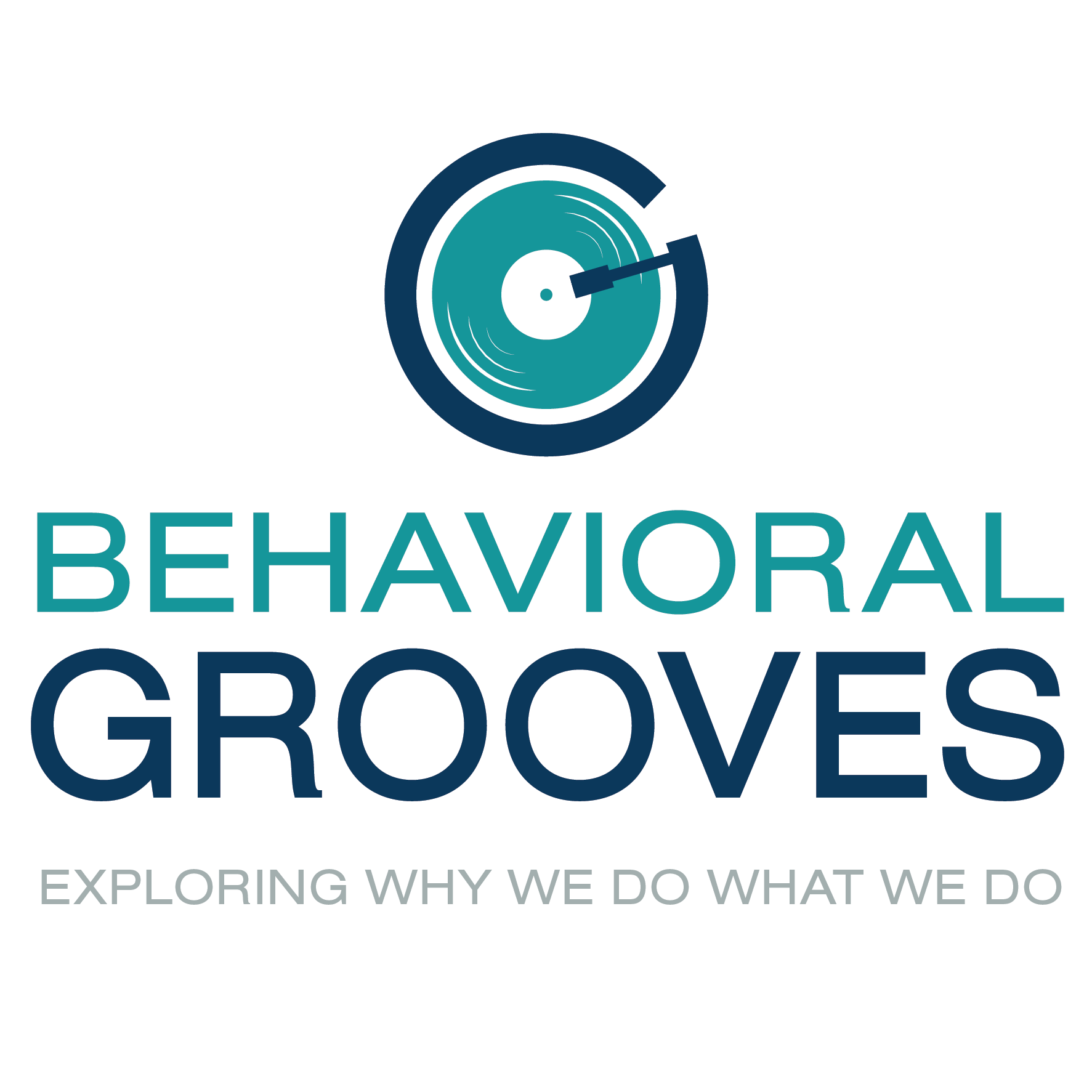
Stories, science and secrets from the world’s brightest thought-leaders. Behavioral Grooves is the podcast that satisfies your curiosity of why we do what we do. Explanations of human behavior that will improve your relationships, your wellbeing, and your organization by helping you find your groove.
Episodes
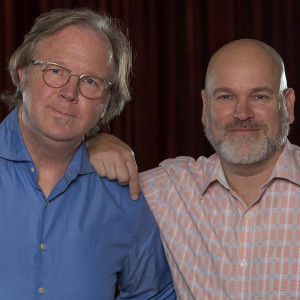
Sunday Jul 07, 2019
Grooving: On Liking
Sunday Jul 07, 2019
Sunday Jul 07, 2019
In this episode, Kurt and Tim explore Robert Cialdini’s Fifth Principles of Influence: Liking. In it, we groove on the very powerful tool for influence and persuasion and give examples of how to apply it.
In short, we like people who like us and are more willing to do things for others who we like. We can find aspects of liking and similarity on a multitude of levels, and this subconscious bias impacts much of what drives our behavior. There are three key things to keep in mind when it comes to maximizing the impact of liking: 1. Don’t give people a reason to say no, 2. Be cooperative, and 3. Be authentic in the way you present yourself.
We hope you enjoy our short grooving session on liking. If you find yourself liking this episode, please be kind enough to leave us a review. Thank you.
Links
Robert Cialdini, PhD on Liking: https://www.influenceatwork.com/principles-of-persuasion/
Negotiation study: https://www.pon.harvard.edu/daily/negotiation-training-daily/negotiate-relationships/
Attractive Bankers in Call Center study: https://journals.sagepub.com/doi/abs/10.1177/002224298404800110
Halo effect: https://en.wikipedia.org/wiki/Halo_effect
Celebrity effect: https://en.wikipedia.org/wiki/Celebrity_branding
Kurt Nelson: @motivationguru and https://www.linkedin.com/in/kurtwnelson/
Tim Houlihan: @THoulihan and https://www.linkedin.com/in/tim-houlihan-b-e/
Check out the Behavioral Grooves website: https://behavioralgrooves.com/

Sunday Jun 30, 2019
Nurit Nobel: De-Biasing the Recruiting Process
Sunday Jun 30, 2019
Sunday Jun 30, 2019
In this episode, we spoke with Nurit Nobel, who is living in Stockholm, Sweden where she’s working on her PhD. Nurit is a co-founder of Impactually, along with one of our favorite guests, Christina Gravert, PhD. Impactually is a behavioral science consultancy that is firmly grounded in both academic rigor and real-world experience.
Nurit, who is related by marriage to the family associated with the Nobel Prize, talked about Impactually’s BOOST model, which is a practical tool for behavior change. The majority of our conversation was focused on a client case study about de-biasing the recruitment and hiring processes. Her client’s intentions were all in the right places; however, the firm still ended up hiring new employees that were fundamentally the same as the existing employees.
The research Nurit relied on to de-bias the hiring process was originally conducted by Iris Bohnet at Harvard, and it is focused on modifying the process in order to overrule our natural biases. Nurit and her team put the research to good use and our discussion dove into the nitty gritty of the issues they dealt with as well as the results they’re getting under the new process.
We also talked about the Lindy Hop, a pre-World War II dance developed in Harlem, and Sweden’s fascinating revival of it.
We hope you enjoy our conversation with Nurit
Links
Nurit Nobel LinkedIn: https://www.linkedin.com/in/nnobel/
Twitter: @nuritnobel
Impactually: http://impactually.se and https://impactually.teachable.com/ for the BOOST online course
Iris Bohnet, PhD, Harvard University: https://scholar.harvard.edu/iris_bohnet/home
Kahneman & Levav on judges after lunch: https://www.theguardian.com/law/2011/apr/11/judges-lenient-break
Christina Gravert: https://www.linkedin.com/in/cgravert/
South by Southwest (SXSW): https://www.sxsw.com/attend/
Richard Thaler: https://en.wikipedia.org/wiki/Richard_Thaler
Dan Ariely: https://en.wikipedia.org/wiki/Dan_Ariely
April Seifert, PhD: https://www.aprilseifert.com/
Laurie Santos and the GI Joe Effect: https://www.youtube.com/watch?v=GimHHAID_P0
Brexit: https://en.wikipedia.org/wiki/Brexit
Muzak: https://en.wikipedia.org/wiki/Muzak
Lindy Hop: https://www.youtube.com/watch?v=u7KO7b9qbfU
Frankie Manning: https://en.wikipedia.org/wiki/Frankie_Manning
“Sonic Boom,” by Joel Beckerman: https://thesonicboom.joelbeckerman.com/
Tim Houlihan, “Washington Square”: https://soundcloud.com/timhoulihan/washington-square
Kurt Nelson: @motivationguru and https://www.linkedin.com/in/kurtwnelson/
Tim Houlihan: @THoulihan and https://www.linkedin.com/in/tim-houlihan-b-e/
Check out the Behavioral Grooves website: https://behavioralgrooves.com/
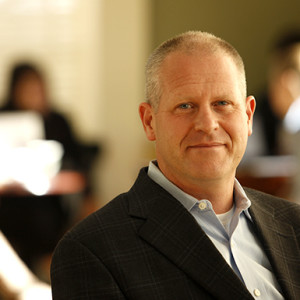
Sunday Jun 23, 2019
Thomas Steenburgh: On Selling New Products
Sunday Jun 23, 2019
Sunday Jun 23, 2019
We are excited to re-share our favorite episodes from time to time and this discussion with Tom was terrifically informative about the sales managers can be more effective at introducing new products to their sales team.
Thomas Steenburgh, PhD is a senior professor of Business Administration and Senior Associate Dean at the Darden School of Business at the University of Virginia. Tom spent a good portion of his career in the corporate world and before he departed for academia, he held senior positions at Xerox Corporation, ending his work there as head of the US Direct Incentive Strategy with a budget of $140 million budget for 4,000 salespeople Tom has partnered with Mike Ahearne, PhD from the University of Houston (featured in a June 2018 episode of Behavioral Grooves) on extensive research related to the performance and management of sales reps.
Recently, the two of them developed ground-breaking research on how to help sales reps be more successful when they are asked to sell new products. Tom and Mike invested 5 years in gathering data from sales managers, salespeople, and even customers. The insights they gained were especially valuable for those working in sales leadership positions.
There were three primary discoveries we discussed with Tom. The first is that the best asset for a sales rep to have when it comes to selling new products is a learning mindset. A learning mindset, as described by Tom, is what comes from a sales rep’s innate curiosity about customers, their environment and their needs. As intuitive as that sounds, it’s a lot less common than we imagine.
Reps with learning mindsets spend more time discussing the market trends affecting the customers as well as the situations and the specific needs their customers have before they start into selling new products. This deep investigation into each customer’s situation contributes to increased success when they start selling. The downside is that it takes more time and reduces output while they’re doing that investigation. Sales managers who are anxious to keep the numbers up from month to month may struggle with this. Tom highlighted a few ways to work around this in the short term.
The second big discovery was the disconnect between sales reps and their customers in how they perceive the strengths of the reps. In other words, customers were asked to rate reps on a variety of scales and reps were asked to the same of themselves. When considering the rep’s strengths, customers tended to rate sales reps very differently than reps rated themselves. The only dimension the reps and customers agreed on was on the sales rep’s product knowledge. Customers were more likely to give reps lower scores on reps’ learning mindsets, adaptability and openness than the reps gave themselves. This revealed big blind spots.
The third big discovery was the role of the rep’s emotional wellbeing in the selling process. We recognize that selling new products can be hard on the reps, but it’s vital to the company’s long-term success. Tom’s research revealed that sales reps need to become change agents within the organization as well as masters to change their own selling methods. These changes, along with saving face with clients, can cause significant emotional challenges – a component that has been undervalued in the past.
It turns out that reps were surprised by the stark contrast between how easy it was to get customers to take meetings and how difficult it was to close deals after the initial interest. Unfortunately, most sales reps failed to do the deep investigation to understand who the best target for the new product would be, so many of their meetings were wastes of time.
We also talked about the importance of strategic account reps with their broader viewpoints and longer-term orientations and how they can be leaders in new product introductions. And we discussed Neil Rackham, the creator of SPIN selling and author of books on consultative selling.
Of course, we also discussed Tom’s eclectic tastes in music. Apparently, he has seemingly equal interest in the works of Philip Glass, great American contemporary composer of minimalist orchestral music and John Lurie and the Lounge Lizards, who are responsible for some of the greatest covers of Ornette Coleman’s classic sax tunes. But Tom also listens to the sweet and simple Americana melodies of Dave Rawlings and Gillian Welch. Not to be outdone with another left-turn, Tom paid special note to Kurt Weill, the early 20th-century composer of The Threepenny Opera which featured the song “Mack The Knife” (lyrics by Berthold Brecht). It was popularized by Bobby Darin in 1958, then Ella Fitzgerald in her 1960 performance Live in Berlin, which we’ve referenced before as one of the greatest live recordings – ever. Our own notes included references to The Who’s Tommy and Pink Floyd’s The Wall.
Thomas Steenburgh, PhD: https://www.darden.virginia.edu/faculty-research/directory/thomas-j-steenburgh/
In our grooving session, we expanded on Tom’s mention of learning mindset and we brought up Carol Dweck’s growth mindset. The intersection of these two concepts is very cool.
Finally, Kurt and Tim help companies with sales compensation, sales incentive structures and selecting the most motivational rewards, don’t hesitate to start a conversation with us. You might be a sales leader with questions, and we can help answer them. We’d love to help your organization improve your bottom line with a behavioral lens.

Sunday Jun 16, 2019
Jonathan Mann: Integrating Behavioral Science into User Experience
Sunday Jun 16, 2019
Sunday Jun 16, 2019
The role of the User Experience (UX) designer is growing in corporations around the world. UX Designers have a great deal of influence over how a customer CAN take an action. Relatedly, behavioral scientists are interested in addressing the issue of WILL a customer take an action. What if the two were fused?
In this episode, Jonathan Mann explores ways in which the UX designer and the behavioral scientist can merge into one, combining the CAN and WILL elements for more effective – and ethical – marketing messages. He relates his experiences from studies he performed at PayPal under the direction of renowned researcher Robert Cialdini, PhD. Their work applied the element of social proof to advertising that increased validation – the act of connecting a bank account to a PayPal account – with a dramatic effect. Millions of dollars of compounding annual revenue materialized after A/B testing a variety of messages.
Jonathan cleverly leverages The Year of the Shark and the terrific elephant & rider metaphor to drive home the important message that marketing will be most successful when it appeals to both the rider (the rational part of the brain) and the elephant (the emotional part of the brain).
In the grooving session, Kurt & Tim discuss the ethical application of such powerful tools and what songs we might use for priming in particular situations.
Special thanks to Stefani Simon, president of Inprela Public Relations, for hosting this event: https://inprela.com/
Links
Jonathan Mann: https://www.linkedin.com/in/jdmann/
Jonathan’s Deck from the presentation: https://drive.google.com/open?id=1pa1CvMOQzWUpreQpirDGSjTEoDl3gPCg
Robert Cialdini, PhD: https://www.influenceatwork.com/
Galeophobia: https://www.medicinenet.com/script/main/art.asp?articlekey=12518
Summer of the Shark Video: https://www.youtube.com/watch?v=YzVC6tBTaQ8
Jonathan Haidt / Elephant and the Rider: https://www.youtube.com/watch?v=X9KP8uiGZTs
Ovid, Metamorphisis: https://en.wikipedia.org/wiki/Metamorphoses
Discount Distance Congruity Effect (Coulter & Norberg): https://www.sciencedirect.com/science/article/abs/pii/S1057740809000266
Visual Depiction Event (Coulter): https://pdfs.semanticscholar.org/3760/a10d0adf5636bbd18f9804fb11ce77a02195.pdf
Auditory Price Perception Effect (Coulter): https://onlinelibrary.wiley.com/doi/abs/10.1016/j.jcps.2011.11.005
All definitions of Behavioral Science Principles including Present Bias, Availability Heuristic, Social Proof among others can be found at: https://docs.google.com/document/d/1XHpBr0VFcaT8wIUpr-9zMIb79dFMgOVFRxIZRybiftI/edit#
Cialdini Hotel Towel reuse: https://assets.csom.umn.edu/assets/118359.pdf
Cialdini 6 Principles of Persuasion: https://www.influenceatwork.com/principles-of-persuasion/
“Don’t Make Me Think,” by Steve Krug: https://en.wikipedia.org/wiki/Don%27t_Make_Me_Think
“People are People,” By Depeche Mode: https://www.youtube.com/watch?v=MzGnX-MbYE4
EDM: https://en.wikipedia.org/wiki/Electronic_dance_music
Kurt Nelson: @motivationguru and https://www.linkedin.com/in/kurtwnelson/
Tim Houlihan: @THoulihan and https://www.linkedin.com/in/tim-houlihan-b-e/
Check out the Behavioral Grooves website: https://behavioralgrooves.com/

Sunday Jun 09, 2019
Grooving: On Scarcity
Sunday Jun 09, 2019
Sunday Jun 09, 2019
This episode is a discussion on the principle of scarcity. Kurt and Tim illuminate the power of this very fundamental effect in behavioral science with some real-world examples. Simply put, the scarcity effect is that people want more of those things they can have less of. It’s terribly powerful and is evident in many aspects of our lives.
“Sale ends tomorrow” is one of the strongest tools in a marketer’s handbook, and Kurt and Tim discuss that and others and the ways they impact behavior. We also talk about the implications of scarcity and how scarcity helps us prioritize and can actually increase focus in our lives.
This episode is the third in our series on the Principles of Persuasion by Robert Cialdini, PhD. The other principles from Cialdini’s work have been discussed in previous episodes and you can check them out at the Behavioral Grooves website. The principle of Reciprocity was overviewed in episode #57 and the principle of Consistency was discussed through the lens of politicians and politics in episode #49. Please check them out if you’re interested in Cialdini’s Persuasion Principles.
Also, please leave us a quick rating and review. We benefit greatly from your support and you only have a few minutes left to do it today!
LINKS
Principles of Persuasion – Robert Cialdini, PhD: https://www.influenceatwork.com/principles-of-persuasion/
Stephen Worchel, Jerry Lee & Akanbi Adawole, (1975) “Effects of supply and demand on ratings of object value” Journal of Personality and Social Psychology, 32(5), 906-914. https://psycnet.apa.org/record/1976-03817-001
Sendhil Mullainathan& Eldar Shafir, (2013) Scarcity: Why Having Too Little Means So Much, Times Books. https://www.amazon.com/Scarcity-Having-Little-Means-Much/dp/0805092641/ref=tmm_hrd_title_0?_encoding=UTF8&qid=&sr=
Tim Urban blog: Wait But Why? https://waitbutwhy.com/
Kurt Nelson: Twitter: @motivationguru or @whatmotivates and LinkedIn: https://www.linkedin.com/in/kurtwnelson/
Tim Houlihan:Twitter: @THoulihan and LinkedIn https://www.linkedin.com/in/tim-houlihan-b-e/
Check out the Behavioral Grooves website: https://behavioralgrooves.com/
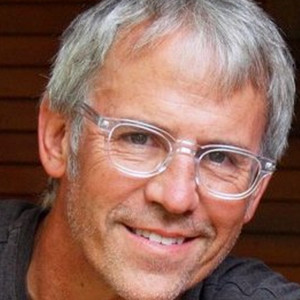
Sunday Jun 02, 2019
Terry Esau: Carbon Fiber Therapist
Sunday Jun 02, 2019
Sunday Jun 02, 2019
Terry Esau is the founder of Free Bikes 4 Kids, a non-profit based in Minneapolis that collects and distributes tens of thousands of bikes to needy children every year around the holiday season. He’s not as well-known as some of our guests, but his story will engage even the savviest marketers and HR executives. Terry realized early on that growing the organization would require meaningful marketing, smooth operations, and a phalanx of well-trained volunteers. To streamline these functions, he turned to Kaizen / Lean analysis and employed a host of behavioral science tools, without all the terminology. As a result, he is maximizing the organization’s mission to bring FREE bikes to kids.
Terry is what we call an Accidental Behavioral Scientist. His work clearly demonstrates the application of foundational behavioral science principles, yet he is unaware of the principles by name or theory. He has applied behavioral science principles to how kids (and their parents) shop for their free bikes and how volunteers are vetted and trained. In roughly 8 weeks, more than 20,000 volunteer hours are put into the collection, repair and distribution of bikes in each city. And it all happens with remarkably high satisfaction for both the riders and the volunteers.
Terry is an avid bicyclist, and he is also a published author and speaker. However, he spent most of his career composing music for documentary films, television and radio advertising. He composed and produced music for over 2,000 TV commercials for clients including Target, McDonalds, Pepsi, Harley Davidson, Honda, Subway, Perkins, Golden Grahams and even Kitty Litter. He’s even has won a Clio award for his work in advertising.
In our grooving session, Kurt and Tim suss out the ways Terry leverages the endowment effect and uses choice architecture to guide kids and parents on the journey of getting a new bike. We also talked about the psychological effects that music has on the taste of food. Not just another rabbit hole, but a very interesting discussion!
We hope you enjoy the discussion with Terry Esau. If you would like to learn about how to bring Free Bikes for Kids to your city, please contact him directly: terry@fb4k.org
Links
Terry Esau: https://www.linkedin.com/in/terry-esau-8692042/
Terry Esau email: terry@fb4k.org and on Twitter: @FB4K
Free Bikes for Kids: http://fb4k.org/
Feed My Starving Children: https://www.fmsc.org/
Kaizen / Lean: https://asq.org/training/lean-kaizen-a-simplified-approach-to-process-improvement-kaizen
QBP (Quality Bike Parts): https://qbp.com/
Guthrie Theater: https://www.guthrietheater.org/
British Advertising Awards (Arrows): https://www.britisharrows.com/british-arrows-2018/
The Current (radio): https://www.thecurrent.org/
“Differentiate or Die” by Jack Trout: https://www.goodreads.com/book/show/105146.Differentiate_or_Die
“This is Your Brain on Music” by Dan Levitin: http://daniellevitin.com/publicpage/books/this-is-your-brain-on-music/
Autotune: https://en.wikipedia.org/wiki/Auto-Tune
“The Service Profit Chain” by James Heskett: https://hbr.org/2008/07/putting-the-service-profit-chain-to-work
Kurt Nelson: @motivationguru and https://www.linkedin.com/in/kurtwnelson/
Tim Houlihan: @THoulihan and https://www.linkedin.com/in/tim-houlihan-b-e/
Check out the Behavioral Grooves website: https://behavioralgrooves.com/
Artists
Crosby, Stills & Nash: https://www.csny.com/
Blood Sweat & Tears: https://en.wikipedia.org/wiki/Blood,_Sweat_%26_Tears
Alice Cooper: https://alicecooper.com/
Amy Grant: https://amygrant.com/
Keith Richards: http://www.keithrichards.com/
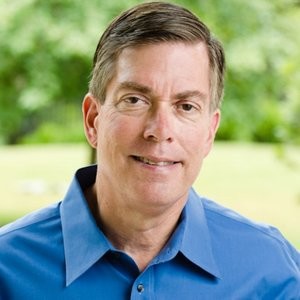
Sunday May 26, 2019
Roger Dooley: Friction and Engagement
Sunday May 26, 2019
Sunday May 26, 2019
Roger Dooley is the author of Friction, his newest book that summarizes great examples of companies do good things to reduce friction for customers and some not-so-good things to increase friction. Roger is also the author of Brainfluence: 100 Ways to Persuade and Convince Consumers with Neuromarketing.
He is the founder of Dooley Direct, a marketing consultancy, and frequent speaker on the topics of marketing and neuroscience. Roger even has ties to Carnegie Mellon as he earned his engineering degree there then went on to complete his MBA from the University of Tennessee.
In this episode, we discuss how friction in the customer experience impacts loyalty and corporate revenues. We also talked about how corporate leaders could help employees be more engaged by reducing nonsensical friction in their daily work lives – like useless paperwork or the doubling of forms and data between separate systems.
We groove on experiences we’ve had where friction negatively impacts a positive customer experience. And we discussed how long it’s been since we bought a CD.
Let us know: when was the last time YOU bought a CD?
Links
Roger Dooley: https://www.rogerdooley.com/
Follow Roger at @rogerdooley
William of Ockham, the Law of Least Effort: https://en.wikipedia.org/wiki/William_of_Ockham
Gartner Group: https://www.gartner.com/en
Brian Massey at Conversion Science: https://conversionsciences.com/author/bmassey/
Chater, Nick and Loewenstein, George F., The Under-Appreciated Drive for Sense-Making (April 20, 2015). https://ssrn.com/abstract=2596897
Teresa Amabile on The Progress Principle: http://progressprinciple.com/books/single/the_progress_principle
Four Drive Model: https://www.leadersbeacon.com/four-drive-model-new-theory-on-employee-motivation/
Joshi Story: http://customerthink.com/joshie_the_giraffe_a_remarkable_story_about_customer_delight/
Kurt Nelson: @motivationguru and https://www.linkedin.com/in/kurtwnelson/
Tim Houlihan: @THoulihan and https://www.linkedin.com/in/tim-houlihan-b-e/
Check out the Behavioral Grooves website: https://behavioralgrooves.com/

Monday May 20, 2019
Alex Imas: Clawback Incentives and Tom Waits
Monday May 20, 2019
Monday May 20, 2019
Alex Imas is an assistant professor of economics in the Social & Decision Sciences department at Carnegie Mellon’s Dietrich College. His research dovetails perfectly into the department’s cross-disciplinary approach by blending behavioral and experimental economics, particularly how social concerns and emotions influence decision making and preferences.
His most current research examines the effectiveness of prosocial incentive schemes and how subtle changes in social norms can have large effects on behavior.
However, our conversation started with Alex discussing his findings with Sally Sadoff, from the University of California in San Diego, and Anya Samek from USC, on the effectiveness of loss contracts. Loss or clawback contracts are similar to incentives but instead of getting paid at the end of the work – contingent of successful achievement, the clawback or loss contract gives you money up front and you are forced to give it back what you don’t achieve the appropriate levels of performance. Many people would say they’d prefer a regular bonus structure – to get paid upon successful completion of their work – but Alex, Sally and Anya’s work found something different.
The loss contract proved to be a commitment device – it helped reduce shirking – and improved performance overall. Even people with a higher sense of loss aversion tended to benefit most from loss contracts. There are even some people who ended up preferring loss contracts.
In our grooving session, Kurt and Tim discuss their real-world experiences with clawbacks: do they work and in what circumstances are they most successful?
With that, please sit back and enjoy our conversation with Alex Imas.
Links
Alex Imas (CMU): https://www.cmu.edu/dietrich/sds/people/faculty/alex-imas.html
Alex Imas (Personal): http://www.aleximas.com
Carnegie Mellon University: https://www.cmu.edu/
CMU Social and Decision Sciences Department: https://www.cmu.edu/dietrich/
"Do People Anticipate Loss Aversion?" (with S. Sadoff and A. Samek). Management Science, 2016.
“Enhancing the Efficacy of Teacher Incentives through Loss Aversion: A field experiment.” https://rady.ucsd.edu/docs/faculty/Fryer_et_al_Teacher_Incentives_NBER_WP18237_2012.pdf By Roland G. Fryer, Jr., Steven D. Levitt, John List, Sally Sadoff
Index funds: https://www.investopedia.com/terms/i/indexfund.asp
Jack Bogle index funds: https://www.fool.com/investing/2019/01/17/jack-bogle-on-index-funds-vanguard-and-investing-a.aspx
“Myopic Loss Aversion and the Equity Premium Puzzle,” Thaler & Benartzi. https://www.nber.org/papers/w4369
Abby Sussman: https://www.chicagobooth.edu/faculty/directory/s/abigail-sussman
Paul Smeets: https://facilities.research.northwestern.edu/directory/paul-jozef-matheus-smeets
Ashley Wilhans: https://www.hbs.edu/faculty/Pages/profile.aspx?facId=943704
Please Kill Me, Legs McNeil & Gillian McCain. https://www.goodreads.com/book/show/14595.Please_Kill_Me
Festivus: https://en.wikipedia.org/wiki/Festivus
Artists
Bob Dylan: https://en.wikipedia.org/wiki/Bob_Dylan
Phoebe Bridgers: https://www.youtube.com/watch?v=psZuC10Oa4E
Bright Eyes: https://www.youtube.com/watch?v=zwFS69nA-1w
Boy Genius: https://www.youtube.com/watch?v=OS48Lp34Zic
Conor Oberst: https://www.youtube.com/watch?v=8FnmP_1vABE
Mitzki: https://www.youtube.com/watch?v=qooWnw5rEcI
Soccer Mommy: https://www.youtube.com/watch?v=Ouem6cFXJvA
Run the Jewels: https://www.youtube.com/watch?v=AfuCLp8VEng
Cardi B: https://www.youtube.com/watch?v=zUOh09GoQgk
Tom Waits, “Jockey Full of Bourbon,” https://www.youtube.com/watch?v=IgMP9O-cIV8
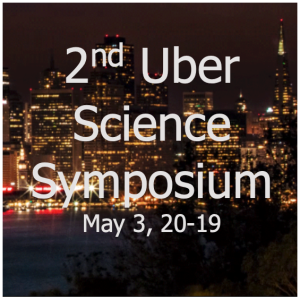
Wednesday May 15, 2019
Grooving: The Uber Science Symposium
Wednesday May 15, 2019
Wednesday May 15, 2019
On May 3, 2019, Kurt and Tim attended an invitation-only Science Symposium featuring a track on behavioral science at the San Francisco headquarters of human and food transportation giant Uber. During the one-day assembly, we sat in on presentations delivered by academic researchers from UCLA, University of British Columbia, University of California San Diego, Dartmouth, Cornell, Columbia University and Stanford, among others. We also heard from practitioners of applied behavioral sciences who work at Facebook, Morningstar, TruFit, Cerego, Ipsos, Maritz, and, of course, Uber.
Kurt and Tim were exposed to a massive amount of new research data, new insights into human behavior from both academic and corporate fieldwork, as well as exciting hallway conversations with people that we wanted to share with you. We nabbed a few quick recordings during the breaks and, regrettably, there are times when the background noise is pretty high. (Our apologies.)
We are grateful to Candace Hogan, a leader of applied behavioral science at Uber, for inviting us and we appreciate the effort that Uber is expending to integrate behavioral sciences with their business model and to share them with us.
Guests (in order of appearance)
Melanie Brucks, PhD student at Stanford University: https://www.melaniebrucks.com/
Elizabeth Kim, first behavioral scientist at Spotify: https://www.linkedin.com/in/elizabethdkim/
Charlotte Blank, chief behavioral officer at Maritz: https://www.linkedin.com/in/charlotte-blank-52554a2/
Ingrid Paulin, senior behavioral scientist at Rally Health: https://www.linkedin.com/in/ingrid-melv%C3%A6r-paulin-27543647/
Shirin Oreizy, founder and president at Next Step: https://www.linkedin.com/in/shirinoreizy/
Scott Drummond, brand builder at Next Step: https://www.linkedin.com/in/scottdrummond/
Joseph Reiff, PhD student at UCLA: https://www.anderson.ucla.edu/degrees/phd-program/areas-of-study/behavioral-decision-making/meet-the-students/joseph-reiff
Mentions
Wendy De La Rosa, principal at Irrational Labs: https://www.linkedin.com/in/wendy-de-la-rosa/
Hal Hershfield, PhD, professor at UCLA: https://www.anderson.ucla.edu/faculty-and-research/marketing/faculty/hershfield
Brad Voytek, PhD, professor at UCSD: https://voyteklab.com/
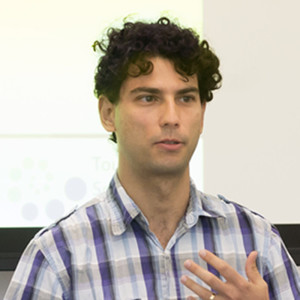
Sunday May 12, 2019
Russell Golman: On Information Avoidance
Sunday May 12, 2019
Sunday May 12, 2019
Russell Golman is an Assistant Professor of Behavioral Economics and Decision Sciences in the Social & Decision Sciences Department at CMU. His pioneering, interdisciplinary work has been published in a wide range of academic journals, including Science Advances, Decision, the RAND Journal of Economics, the Journal of Economic Theory, the Journal of Economic Perspectives, and the Journal of Economic Literature.
In 2017 Professor Golman organized the Belief-Based Utility Conference at Carnegie Mellon with generous funding from the Russell Sloan Foundation and the Alfred P. Sloan Foundation.
Professor Golman was trained as a game theorist with a Mathematics Ph.D. from the University of Michigan. But whereas game theorists usually assume that people making strategic decisions are hyper-rational, Russell wanted to acknowledge that real people are influenced by each other and sometimes make mistakes. They often care deeply about their beliefs, not just about material outcomes. And they rarely settle into an equilibrium in which everybody is static and content.
Russell’s research interests expanded into behavioral economics and behavioral decision research as well as complex adaptive systems and social dynamics. He took a postdoc in Social and Decision Sciences at CMU, where Herb Simon first conceived of the concept of bounded rationality 50 years earlier. Professor Golman joined the faculty here in 2012.
We talked to Russell about information avoidance and curiosity and to what lengths people will strive for both. In our grooving session, Kurt and Tim discuss information avoidance from a corporate perspective and wonder, “what impact does a manager have when he or she avoids a difficult conversation?” We also talked about ways to reduce information avoidance in the working world and how incentives may help managers through tough situations.
We hope you enjoy this episode in our Carnegie Mellon series with Russell Golman.
Links
Russell Golman: https://www.cmu.edu/dietrich/sds/people/faculty/russell-golman.html
CMU Social and Decision Sciences Department: https://www.cmu.edu/dietrich/
Carnegie Mellon University: https://www.cmu.edu/
Golman, Russell, David Hagmann, and George Loewenstein. “Information Avoidance.” Journal of Economic Literature, 2017, 55: 96-135.
Featured on The Academic Minute
Golman, Russell and George Loewenstein. “Information Gaps: A Theory of Preferences Regarding the Presence and Absence of Information” Decision, 2016, forthcoming.
Golman, Russell, George Loewenstein, Karl Ove Moene and Luca Zarri. “The Preference for Belief Consonance.” Journal of Economic Perspectives 2016, 30: 165-187.
GI Joe Fallacy: https://www.youtube.com/watch?v=GimHHAID_P0
Herb Simon: https://en.wikipedia.org/wiki/Bounded_rationality
Bluegrass music: https://en.wikipedia.org/wiki/Bluegrass_music
Great Blue Heron Music Festival: https://greatblueheron.com/
Donna the Buffalo: https://donnathebuffalo.com/
Jam bands: https://en.wikipedia.org/wiki/Jam_band
The Pines: https://www.youtube.com/watch?v=TuuFampLC6E
The Cactus Blossoms: https://www.youtube.com/watch?v=Qj7jJk8TPZk
Kurt Nelson: @motivationguru and https://www.linkedin.com/in/kurtwnelson/
Tim Houlihan: @THoulihan and https://www.linkedin.com/in/tim-houlihan-b-e/
Check out the Behavioral Grooves website:https://behavioralgrooves.com/
